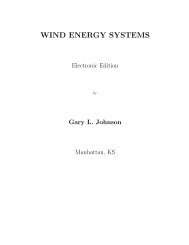Small Scale Foundries for Developing Published by: Intermediate ...
Small Scale Foundries for Developing Published by: Intermediate ...
Small Scale Foundries for Developing Published by: Intermediate ...
You also want an ePaper? Increase the reach of your titles
YUMPU automatically turns print PDFs into web optimized ePapers that Google loves.
from scrap or when castings with different<br />
requirements have to be produced it is desirable<br />
that the foundry should have some<br />
access to basic metallurgical knowledge.<br />
Not every foundry can af<strong>for</strong>d a trained and<br />
qualified metallurgist, nor a laboratory <strong>for</strong><br />
analysis, but many foundries can arrange to<br />
obtain occasional analyses and advice as<br />
necessary from universities or technical<br />
institutions.<br />
There is no substitute <strong>for</strong> practical experience<br />
and training. Without the services of<br />
someone who has worked in foundries<br />
be<strong>for</strong>e, a long learning period must be anticipated<br />
<strong>for</strong> any new foundry organisation,<br />
even if it is planned to make only the<br />
simplest types of casting.<br />
The carbon and silicon contents are the<br />
most important elements to control. It is<br />
possible to carry out shop floor tests which<br />
can give a good indication of the carbon and<br />
silicon content without the necessity <strong>for</strong> an<br />
analytical laboratory.<br />
Casting an accurately <strong>for</strong>med wedge<br />
shaped piece of iron and breaking it to<br />
examine the fracture can tell an experienced<br />
foundryman much about the composition<br />
of an iron melt. It is also possible to purchase<br />
instruments which register the change<br />
in termperature as samples of iron solidify.<br />
The changes in cooling rate are related to the<br />
carbon and silicon content. This equipment<br />
is expensive, although cheaper than a<br />
laboratory, but it can give accurate carbon<br />
and silicon contents which are invaluable to<br />
any foundry attempting to produce iron<br />
castings to a close specification.<br />
Raw Materials<br />
The best raw material <strong>for</strong> the production of<br />
cast iron is pig iron. Pig iron is made from<br />
iron ore: many different compositions and<br />
qualities of pig iron are produced suitable<br />
<strong>for</strong> different types of castings.<br />
Grey iron castings may also be produced<br />
<strong>by</strong> the use of cast iron scrap as a raw<br />
material. Most cast iron is produced from a<br />
mixture of cast iron scrap and pig iron.<br />
Castings made from scrap alone will tend to<br />
have low carbon content and be hard and<br />
difficult to machine. Cast iron scrap is<br />
usually available from broken machinery<br />
and automobile engines. it is important to<br />
ensure that the cast iron scrap is not contaminated<br />
- particularly with alloy steels or<br />
other metals.<br />
Scrap must be broken into pieces small<br />
enough to suit the melting furnace which is<br />
to be used.<br />
The composition of cast iron has to be<br />
varied (in particular the carbon silicon and<br />
phosphorus contents) in relation to the<br />
thickness of the casting and the application.<br />
High strength cast iron cannot be produced<br />
from cast iron scrap containing phosphorus;<br />
phosphorus is often present in scrap<br />
castings which have been made <strong>for</strong> road<br />
furniture, gutters, gratings, and heating<br />
stoves. On the other hand phosphorus<br />
improves the fluidity of molten iron, so that<br />
this type of scrap is useful if thin sectioned<br />
castings are to be made.<br />
It is also possible in some circumstances<br />
to use steel scrap <strong>for</strong> the production of<br />
cast iron. Steel scrap requires the addition<br />
of carbon and silicon during the melting<br />
process. Steel scrap must be carefully select<br />
ed to ensure the absence of alloys. Even<br />
small amounts of chromium plate, of tool<br />
steel or stainless steel, can ruin a melt of cast<br />
iron.<br />
Unless special melting furnaces (electric<br />
induction furnaces) or mixing devices are<br />
available, only small proportions (e.g. 5%)<br />
steel scrap should be used in normal grey<br />
iron melting.<br />
Any necessary silicon additions are made<br />
as ferro-silicon. Ferro-silicon is produced<br />
<strong>for</strong> the steel industry. Large quantities of<br />
power are needed to produce it, so that it is<br />
made in countries. with hydro-electric<br />
resources.<br />
Synthetic graphite or coke is sold <strong>for</strong><br />
re-carburising steel scrap in induction furnaces.<br />
However re-carburisation can also be<br />
achieved using charcoal. Re-carburisers<br />
must not contain undesirable amounts of<br />
sulphur, nitrogen or moisture.<br />
33














